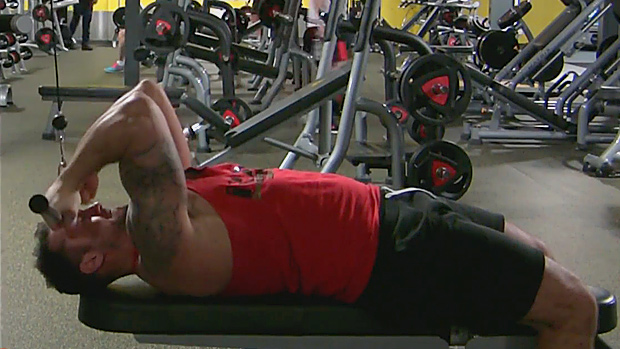Training geeks love to discuss tempo: basically how fast or slow you lift and lower a weight. Manipulating rep tempo can change the effect of the exercise, and some coaches love to prescribe very specific tempos in their programs.
For example, you may have seen a barbell curl tempo prescription like this: Take 1 second to curl the bar up. Pause for 1 second at the top, then lower the bar for 3 seconds.
But does it really matter? Most coaches would say yes, and they're probably right, but a new study shows that, at the very least, we may be overthinking tempo.
The Study
Twelve men with 3.5 years of lifting experience were recruited for the study. Each subject completed two protocols on different days using either:
- A self-selected rep duration: They could do the reps as fast or slow as they wanted.
- A fixed rep duration: A 2-second concentric or lifting phase, and 2-second eccentric or lowering phase.
Each group did three sets to failure at 80% of 1RM on the 45-degree leg press. For the fixed rep group, failure was defined as the inability to continue maintaining proper tempo for two consecutive reps.
EMG of the vastus medialis and vastus lateralis was recorded along with session volume and session TUT (time under tension).
The Results
The self-selected tempo group performed significantly more volume and had higher EMG values compared to the fixed tempo group. Total TUT for each workout wasn't significantly different. All self-selected tempos were faster than the fixed 2:2 tempo.
What This Means
Artificially slowing down your reps is decreasing the muscle activation and hindering your ability to do more work, at least according to this study. Instead, auto-regulate and perform rep tempos based on what feels good and is right for you.
Giving enough effort and doing work is what's important, not how fast or slow you move the bar. Don't cheat yourself out of quality workout volume by focusing on rep tempo. Focus on moving the weight at whatever speed you're comfortable with to get the most work in.
Reference
- Nobrega, S. R. et al. (2018). Self-Selected Vs Fixed Repetition Duration: Effects on Number of Repetitions and Muscle Activation in Resistance-Trained Men. Journal of Strength and Conditioning Research. doi:10.1519/JSC.0000000000002493





